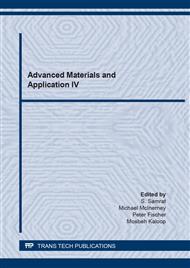p.111
p.117
p.123
p.131
p.139
p.145
p.151
p.157
p.165
Experimental Investigation on Unconfined Compressive Strength of Cemented Soils Admixed with Saturated GAC
Abstract:
This research investigated the compressive strength of cemented soils admixed with saturated granular activated carbon (GAC). The saturated GAC was obtained from the water filtration system. A series of unconfined compressive strength was performed on both compacted soil-cement specimens and compacted soil-GAC-cement specimens with GAC content of 30 percent. All specimens were prepared by compaction with energy equivalent to the modified Proctor test. The results from modified Proctor tests showed that the maximum dry unit weight and the optimum moisture content of soil-GAC sample was less than those of soil sample. From the unconfined compression tests, there was tiny development of strength for both types of specimens with cement content of 1 percent throughout the curing period of 28 days. For both types of specimens with cement content of 2 and 3 percent, the significant development of strength occurred after curing for 3 days. The strength of specimens typically increased with increasing cement content. Generally, the strength of compacted soil-GAC-cement specimens was less than that of compacted soil- cement specimens. It was also observed that the relationships between normalized compressive strength ratio and curing period was unique for the specimens with the same cement content.
Info:
Periodical:
Pages:
145-150
Citation:
Online since:
August 2021
Authors:
Price:
Сopyright:
© 2021 Trans Tech Publications Ltd. All Rights Reserved
Share:
Citation:


